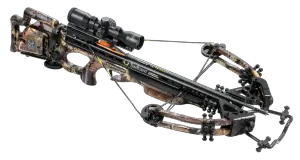
The crossbow is currently a very popular choice of avid target archers and bowhunters.But not only the quality but also the quantity plays an important role with X-Bow. (2) Modern crossbows work under the same mechanics but utilize a cam system just like a compound bow.
#Recurve vs compound crossbow full
When the crossbow’s string is pulled back to full draw, a locking mechanism is engaged, locking the bow’s string, keeping the crossbow at full draw until the archer triggers the shot.Ĭrossbows were one of the most devastating wartime weapons in ancient East Asia, Europe, and the Mediterranean. Due to the high draw weight, various mechanisms were created to aid the archer in drawing the crossbow to full draw. The limbs were fashioned to have a stronger resistance to bending therefore required much more force to draw back when compared to longbows and recurve bows.

The original crossbows consisted of a bow with recurved limbs which was mounted on a stock similar to a gun stock. The recurve bow is still a popular bow choice for use in traditional target archery and hunting. The recurve bow’s energy storing limbs allows the bow to be shorter in length than the longbow thus becoming more convenient to use in tight quarters situations such as in thick cover or on horseback. The strung recurve bow’s tips are now vertical in lie and the bows limbs are now preloaded with stored energy allowing the bow to shoot a much faster arrow than its predecessor the longbow. When the archer strings a recurve bow, the forward curved limbs are bent back towards the archery to enable the archer to string the bow string on the limb tips. The recurve bow is a bow, when not strung with a bow string, that has tips that curve forward of the archery.

The historically significant longbow is still available for purchase and is still used today in traditional target archery and hunting. During medieval warfare, thousands of archers would fill the sky with potentially lethal arrows from the furthest lethal distance. The effective range of longbows has been known to be around 200 or more yards. Modern longbows have a draw weight of around 50-60 lbs while longbows of the past reached draw weights of 150+ lbs. (1) Longbows, throughout the years have been between the lengths of 4 and 7 feet, with an average length between 6-6.5 feet. Hunter gatherers typically made this bow out of yew wood, but longbows have also been made of osage orange, hickory, oak, beech, birch, ash, elm, and bamboo. The longbow was the first bow ever invented. Draw lengths are adjustable on a compound bow by changing modules, cams, or by adjusting setting on the cams. Modern compound bows can reach speeds exceeding 365 feet per second. After peak weight is reached, the compound bow’s cam system ‘rolls over’ already having stored maximum bend or load in the limbs, the draw weight is lessened, and the archer is actually only ‘holding’ 14-20 pounds.ĭuring the shot, the cams release the stored energy and the arrow is delivered with great kinetic energy. While at this moment of the draw, the bow’s limbs are under their greatest ‘load’ or bend. When drawing a bow that requires 70 pounds of force, the archer draws back reaching peak draw weight well before full draw. Modern compound bows may have a draw weight ranging from 45-70 lbs but when at full draw, due to the mechanical design of the bow, the archer is only holding 20-25% of the draw weight at full draw.

The much more energy efficient compound bow uses a system of stiff limbs, a bowstring, cables, riser and cams (pulleys) in order to store a large amount of energy into the bow’s limbs while relieving the archer from peak draw weight at full draw. First developed and patented (1) by american inventor Holless Allen in 1966, the compound bow revolutionized the sport of archery.


 0 kommentar(er)
0 kommentar(er)
